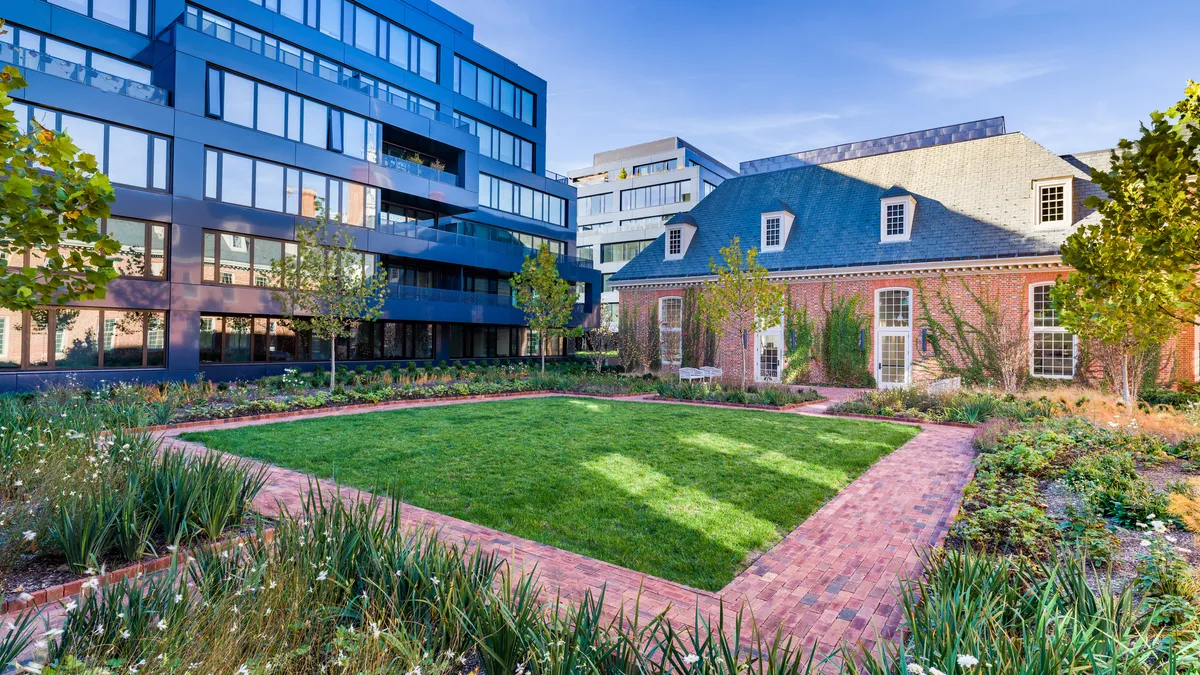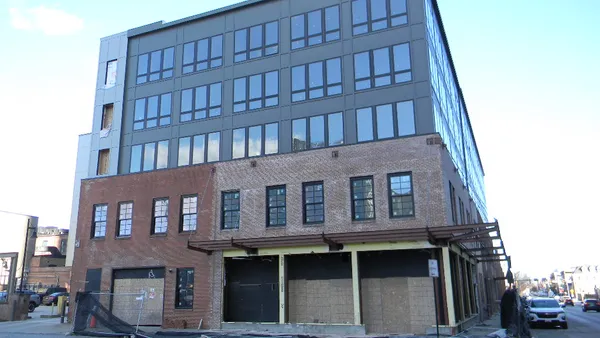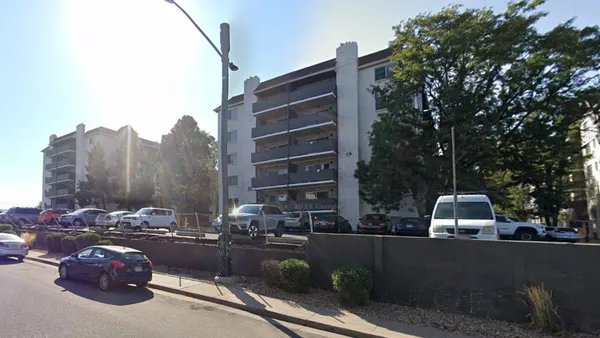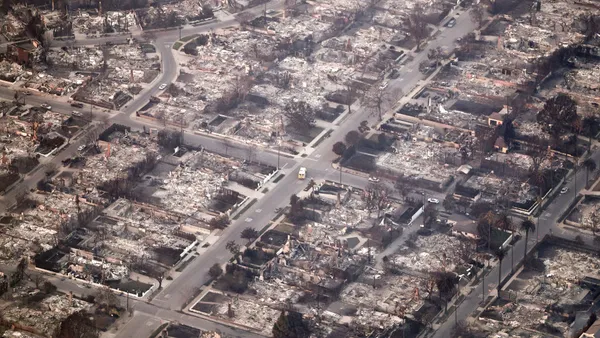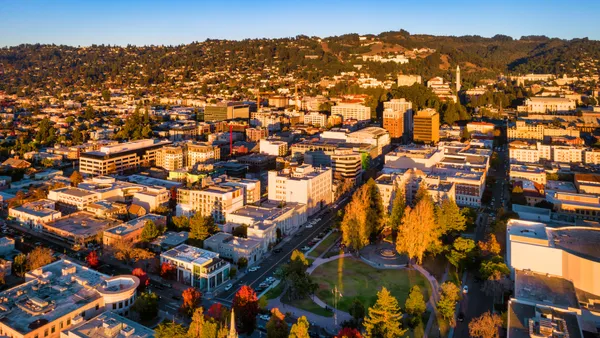Between 2020 and 2021, developers in Washington, D.C. converted former office spaces into 1,147 new apartments, leading the nation in adaptive reuse projects of this type, according to data from Yardi Matrix cited by RentCafe.
Project volume has slowed in the years since, both in the district and in the nation at large — Los Angeles was in the top spot for 2022 with 692 units converted, while Washington was not in the top 10 at all, according to RentCafe.
To reboot the district’s numbers, the city’s leadership is exploring incentives for office-to-multifamily conversions as a part of its broader, long-term goal to bring residents to its downtown core, especially given the cost and logistical problems these developments can pose. Among these is 2022 legislation that provides tax abatements for conversion projects that include a certain portion of affordable housing.
The city has 383 additional converted units under construction, and another 2,105 in the planning stages, based on data from the Downtown DC and Golden Triangle Business Improvement Districts, as reported by Axios. Among the most notable projects in development is The Geneva, a conversion by Post Brothers of two 1960s office buildings into over 600 apartments.
Two other large projects in progress incorporate new residential developments into reuses of old commercial sites: City Ridge, a conversion of the former Fannie Mae headquarters site by Roadside and Sekisui House into a retail center and 691 residential units, and The Parks at Walter Reed, a 2,099-unit mixed-use development by Hines at a former Army medical center.
Space to spare
Office vacancies have been on the rise in the district since 2013, but the COVID-19 pandemic and the shift to working from home accelerated an ongoing trend, according to Uwe Brandes, professor and faculty director of urban and regional planning at Georgetown University, who spoke at Greenbuild 2023 in Washington, D.C., last month.
Total office vacancy in the district hovered around 10% until 2019, Brandes said, then rose to 15% by the time of the first COVID-19 lockdowns in the U.S. Vacancy has since peaked at almost 20%, where it remains to this day. Average office rents have remained stable over the last decade, despite economic inflation.
Notable residential conversions delivered in the city since the start of the pandemic include:
- Boathouse, a former Howard Johnson hotel located next door to the Watergate Hotel.
- The Wray, a former State Department building.
- Watermark, a former General Services Administration building.
While the district has the third-highest concentration of office space in the country, it only ranks fifth in effective use. Now, planners are in “the unprecedented and unique position of reimagining how we use buildings in our city,” Brandes said, given the empty space at hand.
To this end, the district has created the D.C. Comeback Plan: 2023-2027, which aims to create “equitable post-pandemic growth.” One goal of the far-reaching plan is to add 15,000 new residents to the downtown area.
Key issues and unknowns for this plan include the flight-to-quality in office and residential markets. This, according to Brandes, means that while “outstanding” office spaces are doing well, outdated ones are sitting empty.
Green goals
Another important component of the district’s redevelopment goals is the creation of more sustainable buildings and spaces. The city maintains a Building Energy Performance standard mandating a minimum of clean energy use for new construction, and aims for carbon neutrality by 2045, said Nick Burger, deputy director of the Energy Administration office at the District of Columbia’s Department of Energy and Environment, at the Greenbuild session.
In order to enable the full extent of this mandate, Burger said that the city must reduce constraints on developers, such as access to financing, and impress upon them the importance of creating green energy systems in buildings that will persist over decades. Among the city’s resources is the DC Green Bank, an instrument of the district government, which provides financing for energy-efficient and resilient construction projects.
He also urged caution about the long-term consequences of constructing new buildings without energy efficiency in mind.
“If we bake in inefficient systems,” Burger said, “it locks us into those investments for a long time.”



